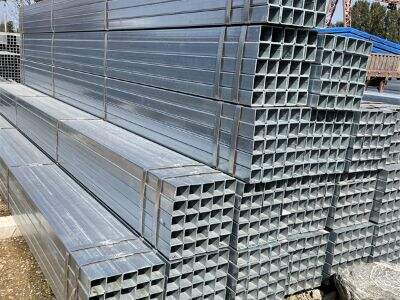Uglerodli to'qim ikki asosiy komponentdan iborat metal turi: dem va uglerod. Bu juda kuchli va iloji bor metallardir, shuning uchun ularga bir necha vazifalar va loyihalar uchun idealdir. Uglerodli to'qim lurun pleyalar, ushbu metallning yuzada qatlamalari deb tushuniladi, turli sohalarda oddiy. Ushbu pleyalar sanoat qurilishidan kosmonavtikqa qadar har qanday narsaga kiradi; ular, masalan, kundalik hayotimizda hamsafarlardek.
Ug'irning quvvat va qo'shuvchanlikka ta'siri
Qachon qancha ug'ir metallga aralashtirilganligi, shu metallning quvvati va qo'shuvchanligini belgilaydi Uglerod po'lat taqalar. Asosan, tellerdagi ko'proq uglerod orasida metall kamchalik va qo'lga kiritishiga ega bo'ladi. Bu shuning uchun og'ir og'irlar bilan yuqori darajada zayiflashishga muqoppa ekanligini anglatadi. Ammo agar tellerda ko'proq uglerod bolsa, u kamroq bog'langan bo'ladi. Ammo sizning bir necha flex kerak, chunki siz metallni chiqish va sho'kni olib tashlash uchun egallab turmoqchisiz, bu yerda to'siqdan o'tishi kerak. Bu shundaydirki, tellerga necha uglerod bor bo'lsa, metall kamchalikka ega bo'lishi mumkin - ozod bozorda bu xususiyatlarga pul to'lanadi, chunki uzun davom etuvchi britannik asosiy hisobidan foydalanadi. Uglerod miqdori kamroq bo'lgan tellerga nisbatan uzluksiz bo'lishi mumkin.
Uglerod telleri taqalari turlari
Uglerod telleri taqalari uch turda va ular ichida turli foizda uglerod mavjudligi bo'yicha sinflashtirilgan. Ular yumshoq, o'rta va baland uglerodli teller taqalari.
Yengil oq savdakli paltarlar %0.3 dan kam savdakka ega. Ular eng mashhur savdakli paltar turi sifatida taklif etiladi va ishlash asanligi sababli koʻp talab qilinadi. Ular suvlashtirish va shakllantirish asandir, shuning uchun ular qurilish, avtomobil savdo va hatta qayiq savdo sohasida ishlatiladi.
Oʻrtacha savdakli paltarlar %0.3 dan %0.6 gacha savdakka ega. Ular yengil savdakli paltarlardan kamchalikda yaxshiroq va singar. Quvvati sababli, ular mashinalarni, hamda mashina va samolyot uchun asbob va qismlarni yaratishda umumiy ravishda ishlatiladi. Bu quvvatlangan singarlik, qoʻshimcha quvvat talab etiladigan holatlarda mukammal hisoblanadi.
Men paltar oqasi va uni foizi boʻyicha gapiraman, bu baland darajada ug'inox quyuq naryn 0.6 % dan yuqori uglerod miqdoridagi plakalardan gapiraman. Bunday turdagi plakalar birinchi darajada oson va ko'p holatda eng kuchli hisoblanadi. Sub metallari esa ekstremal quchi bilan yetarlicha bo'lgan va kesish uchun qabul qilinadigan metalllardir, shuning uchun ular bog'liq vositalarda, misol uchun, kesuvchi asboblar, chiziqchilar va yengillar kabi, ko'p stresga tushgan holda ishlatilishi kerak bo'lgan metalllarda idealdir. Shunday qilib, bosim ostida kuchli qolish imkoniyati jumlama usuli orqali xususiy sektorlarda ularga muhim qiymat beradi.
Ushlab ketish va mashinlash uchun muhimligi
Agar uglerod metalli plakalar ishlatilsa, ularning ushlash va mashinlashi ikkita muhim tomonni hisobga olishingiz kerak. Ushbu elementlar metallning uglerod miqdori bo'yicha o'zgaradi, bu esa plakalarni qanday ishlatishimizni belgilaydi.
Чизилганилик, чизилганда трещина ёки бошқа муаммолар юз бермаслиги нисбatiда ташқари ока аериладиган суви келиши шулардаги ока аериладиган суви келишининг қандай-қандай йиғиликлари бор. Кучли карбонли суви келишининг плиталари чизилганиликда жуда яхши. МИГ (метал инерт газ), ТИГ (тунгстен инерт газ) ва чапчичакли чизилганилик кabiри техникалар ишлатиlish мумкин. Айримdir, ока аериладиган суви келишининг ортача ва юксак карбонли плиталари кўпроқ муаммоли чизилганилик техникалари керак. Бу, чизилганилик процессида трещина юз берishi учун, дефектлардан захирадиш учун кўпроқ камсатиш керак.
Кучли карбонли суви келишининг плиталари турли операциялар билан механик ташлашга эга бўлади, мисол учун, чарвий, миллинг ва бурish. Сақлаш mumkin bo'lgan holatda, ушbu плиталарни жуда яхши ташлаш ва формалиш мумкин. Деганликин, ортача ва юксак карбонли плиталар эътиборан жиҳодкор ва, ташлаш нотоғри бўлса, улар maxsus ташлаш усуллари ва техникалари керак бўлади.
Тогри карбонли суви келишининг плитасин танлаш
Maxsus muammosiz carbon tiyub plitani tanlashda ko'rsatiladigan narsalar soni mavjud. Birinchi muammo - sizning muammoyingiz uchun kerakli quvvat va davomiylik. Agar siz kuchli va uzun davom etadigan plita kerak bo'lsa, uchun baland carbon plita sog'liq tanlovi bo'lishi mumkin. Yengil uglerodli po'lat plita uning o'z ichida qaydagi plastika bo'lishi mumkin va ularga aralashish asan.
Yaxshi, plitaning narxi haqida nima? Yengil carbon plitalar umuman eng arzon, balki baland carbon plitalar eng qimmat. O'rta carbon plitalar umuman o'rtacha narx oraliqlarida yotadi. Byudjetizni hisobga olgan holda, siz loyihangiz uchun to'g'ri qaror qabul qila olasiz.
Qo'shiq, esitmoy qobiliyati va narx bilan birga, siz o'zgaruvchan to'rtburchakli tomonga kerak bo'lgan ishni ham hisobga olishingiz kerak. Turli sanoatlar va muammolar o'ziga xos carbonli tomonga ehtiyojlarini ko'rsatadi. Ular, mashinaviy sanoatda misol sifatida, ushlab chiqarish uchun ko'p harajat talab qiladigan, ya'ni kosmik sanoatda oson og'irlikdagi baland kuchli carbonli tomonga ehtiyojlari mavjud, chunki materiallar juda yuqori harorat va bosimlarga tabii bo'ladi. Buning aksincha, qurilish sohasi og'ir yuklarni va qattiq ob-havo sharoitlarini sababli holatga dayandirish uchun rost va davom etadigan carbonli tomonga ehtiyojiga ega.
Jami sifatda, loyihangiz uchun to'g'ri pleytni tanlashda turli xil ugri plitka turlaridan va ularning ishlatilishiga doir ma'lumotga ega bo'lish muhim. Bu Carbon Steel Plates va Carbon Steel Plate turlari ko'plab sohasida va ko'plab manfaatlarda ishlatiladigan mashhur staliy pleyt turi. Lurun sifatida, biz shu Carbon Steel Platesning belgilanayotgan turlarini va kaltsalarini taqdim etamiz. Bizning komandamiz bilan bog'lanib, carbon steel platesimiz nima qilishda sizga yordam berishi haqida ko'proq ma'lumot oling!
 EN
EN
 AR
AR
 NL
NL
 FI
FI
 FR
FR
 DE
DE
 EL
EL
 HI
HI
 IT
IT
 JA
JA
 KO
KO
 PT
PT
 RO
RO
 RU
RU
 ES
ES
 SV
SV
 TL
TL
 IW
IW
 ID
ID
 SR
SR
 UK
UK
 VI
VI
 ET
ET
 HU
HU
 MT
MT
 TH
TH
 TR
TR
 FA
FA
 AF
AF
 MS
MS
 SW
SW
 MK
MK
 KA
KA
 BN
BN
 BS
BS
 LO
LO
 MN
MN
 MY
MY
 UZ
UZ



